
|
BOP's 50 Favorite Horror Films: 30-21
30) Pitch Black
At first, the survivors think that their biggest worry is one of their passengers, an extremely dangerous war criminal by the name of Riddick (played by Vin Diesel) who's almost feral and can see in the dark. However, as they realize the true reason that there's no one left at the outpost, Riddick quickly becomes if not the least of their problems, somewhere towards the middle of them. There is life on the planet after all; big, nasty beasts that are allergic to light. This wouldn't be a problem, except for the rotten luck that they've arrived on the planet just as the once-every-28-years eclipse is occurring. The survivors make an uneasy alliance with Riddick to try and get to the one working spaceship on the planet, arming themselves with every light source they can think of, all the while being stalked by these creatures. Twohy makes full advantage of the darkness, with these creatures literally striking from nowhere on the unlucky souls who've managed to lose their light. It owes a great debt to Alien, of course, in matters ranging from creature design to the makeup of the stranded survivors. It's no cheap rip-off, though, as it's interested as much in its characters as the scares. In a life-and-death situation, do you band together or try and save just yourself? Pitch Black answers that question, with the wrong response leading to being eaten. (Reagen Sulewski/BOP)
29) Aliens
The tremendous creature effects are back, and are joined by one of the more impressive sets a horror movie has had; the combination of metallic/scientific and organic elements does well to create an otherworldly setting (the lab set has been copied numerous times since). Not enough ever gets said about this when the movie is mentioned. However, we're all here for the scares, right? This is one of the most intense cinematic experiences ever; after the prologue to get them to the colony, the tension barely lets up for a moment as the Marines have the tables turned on them; they're the ones being hunted now. Sure, they've got their weaponry, but these things are nasty beyond belief! Pretty soon it's not a question of beating the aliens but just how many of the crew are going to make it off this planet. The acting is above par for many horror films; Sigourney Weaver earned an Oscar nomination for returning as Ripley. She looks tougher than in the first film but still has that sense of, "I never wanted any part of this", around her. Bill Paxton had probably what is his career-defining performance as Hudson and Paul Reiser, of all people, steals scenes with his calm weasel of a Company representative. Director James Cameron, who's proven himself to be the King of Effective Sequels, was able to take the original film and twist it into something that created an entirely new genre, the action-horror film. It's the kind of film that leaves you glad you saw it, but not really sure if you want to go through it again. (Reagen Sulewski/BOP)
28) The Others"Are you mad? I am your daughter."
The Others is a bone-chilling movie. It succeeds both as a mystery which would make Dashiell Hammett green with envy and as a well-developed character study with several truly jolting scares, the biggest, of course, being the one quoted above, when a little girl's voice comes from the mouth of a decrepit old woman. It's this moment which entraps viewers in their need to decipher the movie's twist. All we know in the introductory sequences of the movie is that an overprotective mother has sequestered her young children away from the world. The youngsters are even blocked away from the light of day due to a medical condition. All they have are each other and the cavernous rooms of their mansion residence. This seclusion and constantly-forced interaction creates paranoia and frustration in all three of them, so they are overjoyed when a man and woman arrive, professing the desire to work for them. We expect their lives to improve, but that's not to be. The layers of mystery are unraveled with tantalizingly slow precision as it becomes obvious that Nicole Kidman's character, Grace Stewart, has long since lost any remaining grip on her always-tenuous sanity. The children are in constant jeopardy, but masterful red herrings keep us from piecing together who the real threat to them is. We are left guessing throughout the proceedings, thinking along with the director as he deftly guides us to a truth which is equal parts obvious in hindsight and impossible to suss out during the first viewing. The Others is a tour de force of creepy storytelling, and its success is that much more amazing when we consider the artist behind the film's script, as well as its direction, was not yet 30 when he created it. In addition, Nicole Kidman might have gotten more press and nominations for Moulin Rouge!, but true film buffs almost universally hail this as her best performance as an actress. She is in almost every scene, and without her daring portrayal of a long-crazy mother still driven to protect her scions at any cost, the brilliant concept still would have fallen flat. Her effort was that core to the success of Amenábar's vision. (David Mumpower/BOP)
27) Hellraiser
26) Hellbound: Hellraiser 2
25) The Eye
Then again, maybe you shouldn't. (Walid Habboub/BOP)
24) The Hitcher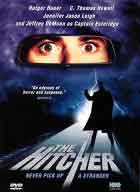 The Hitcher is a movie that works best when seen late at night, that time where one is sitting alone in the dark while not necessarily being at the peak of attention level. If one can pay enough attention to be drawn into the movie, the end result can be one of being riveted as well as suitably scared.
The Hitcher is a movie that works best when seen late at night, that time where one is sitting alone in the dark while not necessarily being at the peak of attention level. If one can pay enough attention to be drawn into the movie, the end result can be one of being riveted as well as suitably scared.Starring C Thomas Howell as our Everyman protagonist and Rutger Hauer as the title psycho, the movie starts to work right from the start with its clichéd casting. The movie starts with Howell, of course, picking up Rutger Hauser (doesn't anybody ever listen to the "don't pick up hitchhikers" advice?) and then the movie moves into a carefully paced chase set-up. Several twists and shocks later, there is indeed a final show down between the two leads. The movie operates in kind of real-but-not-real world. Certain events are not completely believable within the context of the world we live in but just add to the overall effect of the movie, if one is willing to go along for the ride. The movie takes places mostly at night on deserted highways and little out-of-the-way, all-but-forgotten towns, diners and truck stops. The movie uses a psychological approach and seems as if it is one of the most grisly movies that the viewer has ever seen, when, in fact, the violence is almost completely off-screen. The film lets the viewer's mind do the work. Well worth checking out, and if one has seen the movie, it is well worth taking another look at to remind one of the power of the overall movie, as well as the punch of scenes such as the oft-remembered finger-food sequence. (Calvin Trager/BOP)
23) Freaks
22) The Sixth Sense"I see dead people".
And no, I hadn't a clue as to the twist until about 15 seconds before the reveal. And glad I am that I didn't. (Stephanie Star Smith/BOP) August of 1999 was a coming out party for two great cinematic talents; the director of this film, M. Night Shyamalan, and its child star, Haley Joel Osment. Both were absolutely essential to the phenomenon that this film became. Osment is simply brilliant as Cole Sear, a little boy that's constantly terrified, and hiding the secret about just what's terrifying him. Trying to pry the secret away is Malcolm Crowe, a psychologist who's seen the same symptoms before, in the patient that shot him a year ago. The film actually takes its sweet time getting to Cole's secret, although if you saw any of the advertising for the film you already knew it. Say it with me... "I see dead people." It wouldn't have been hard to guess without that either, as there's a couple of very effective shocks involving said dead people. In only Shyamalan's second major movie, he shows an uncanny ability to use the camera to best execute these shocks, especially the use of long shots and extended takes to ramp up tension. This all translates to a deliberate pace which can be too much for some, but is especially rewarding for those who allow themselves to go along for the ride. Uncommon among horror films, Sense actually tries to find a psychological explanation for its horrors. The solution to Cole's problem isn't resolved through visits to a psychic or magic; instead it's resolved through talking. This film could only have been made in the 1990s, as it's the first pro-active horror film. None of this works without the actors though, and in addition to Osment, who gives what may be the best child performance of all time, there's Toni Collete as Osment's mother and Bruce Willis as the psychologist, who are both excellent in understated roles. It's almost impossible to talk about this film now without making reference to the ending; this was the film that inspired the rush in the last three years to have everything end with a sudden reversal. As opposed to the tacked on nature of some of those other endings, this one feels organic; rather than mere trickery, it makes you look back on the film and re-examine everything in a new context. It's a rare movie that seeks to scare and enlighten. (Reagen Sulewski/BOP)
21) Invasion of the Body Snatchers (1978 version)
This is one of the rare instances where a remake surpasses the original, as Kaufman transports the premise from a small town to a big city. As a result, our sense of alienation and remoteness is amplified; people are everywhere, but unknown is which are real people and which are emotionless facsimiles. Don Siegel's original was an allegory on conformity, group-think - the perfect parable of Cold War ideology - which could cleverly be appropriated by both sides. Kaufman's remake keeps the allegory intact and enhances the palpable sense of dread. Unsettling from beginning to end, the film never leaves you. (Alex Hudson/BOP)
Click here to read selections 41-50.
|
Monday, December 15, 2025
© 2006 Box Office Prophets, a division of One Of Us, Inc.
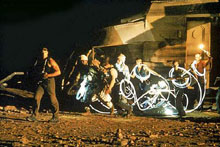 Nighttime almost always features prominently in horror films; it's such a fundamental fear that it becomes a shortcut for directors when they want to ramp up the tension. It's generally not real nighttime, though. David Twohy puts all those other nighttime movies to shame in Pitch Black by really turning out the lights and making illumination necessary to survive. At the start of the film, though, it's all day. A spacecraft crash-lands on a remote outpost that appears to have been abandoned. It's on a planet in a three-sun system, so the light is very oppressive (and there's some great washed-out cinematography here) and the planet looks totally barren.
Nighttime almost always features prominently in horror films; it's such a fundamental fear that it becomes a shortcut for directors when they want to ramp up the tension. It's generally not real nighttime, though. David Twohy puts all those other nighttime movies to shame in Pitch Black by really turning out the lights and making illumination necessary to survive. At the start of the film, though, it's all day. A spacecraft crash-lands on a remote outpost that appears to have been abandoned. It's on a planet in a three-sun system, so the light is very oppressive (and there's some great washed-out cinematography here) and the planet looks totally barren. 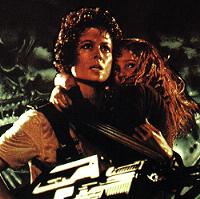 It's 57 years after the events of Alien, and Earth, in the worst infrastructure decision in history, has decided to build a colony on the planet that the Nostromo discovered. Of course, no one's discovered any aliens, so when Ellen Ripley tries to warn them (you could make a lot of the fact that James Cameron's films tend to have women that are consistently ignored, but that's a different kind of write-up), no one's ready to believe her. That is, until they lose contact with the colony. Faster than you can say, "I told you so", there's a whole ship of Marines on their way to investigate, with Ripley along as a consultant. It doesn't take them long once they've landed to discover that the colonists aren't just off having a BBQ somewhere...and what's with those acid burns in the floor grating?
It's 57 years after the events of Alien, and Earth, in the worst infrastructure decision in history, has decided to build a colony on the planet that the Nostromo discovered. Of course, no one's discovered any aliens, so when Ellen Ripley tries to warn them (you could make a lot of the fact that James Cameron's films tend to have women that are consistently ignored, but that's a different kind of write-up), no one's ready to believe her. That is, until they lose contact with the colony. Faster than you can say, "I told you so", there's a whole ship of Marines on their way to investigate, with Ripley along as a consultant. It doesn't take them long once they've landed to discover that the colonists aren't just off having a BBQ somewhere...and what's with those acid burns in the floor grating?
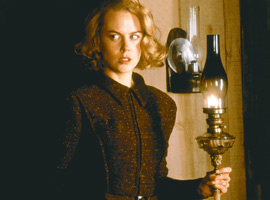 With an advertising campaign that refused to shy away from the startling similarities to The Sixth Sense, most movie lovers were armed and ready to dismiss Alejandro Amenábar's first Hollywood picture as the latest in a recent string of cheap knock-offs. Those opinions were quickly proved incorrect, as The Others became one of the most successful word-of-mouth blockbusters in recent memory. The reason for its success was simple.
With an advertising campaign that refused to shy away from the startling similarities to The Sixth Sense, most movie lovers were armed and ready to dismiss Alejandro Amenábar's first Hollywood picture as the latest in a recent string of cheap knock-offs. Those opinions were quickly proved incorrect, as The Others became one of the most successful word-of-mouth blockbusters in recent memory. The reason for its success was simple.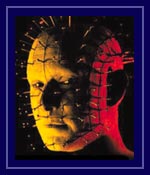 This film's greatest success is terror through uncertainty. Master of suspense Clive Barker wrote and directed this first film in the series, and it strongly succeeds because the horror scribe so completely captures his own vision without revealing too much. The infamous Cenobites, who are the driving force behind the events that take place in the film series, are only marginally revealed in rapid flashes. The movie provides a glimpse at one man's concept of hell; chock full of malevolent ruling forces who dole out pain and pleasure in equal yet unpredictable doses, with little regard to the battle of Good vs. Evil. There's plenty of splatter and an abundance of gore, though the successive sequels take the carnage to even greater excess. In short, it's a horror film that has elements to satisfy all sorts of fans of the genre. For people who enjoy suspense, the story is edge-of-your-seat exciting. For slasher fanatics, there's violence and squeamish scenes galore. And with the establishment of the archetypal Pinhead and fellow Cenobites, the film has etched itself as a classic worth revisiting. (Kim Hollis/BOP)
This film's greatest success is terror through uncertainty. Master of suspense Clive Barker wrote and directed this first film in the series, and it strongly succeeds because the horror scribe so completely captures his own vision without revealing too much. The infamous Cenobites, who are the driving force behind the events that take place in the film series, are only marginally revealed in rapid flashes. The movie provides a glimpse at one man's concept of hell; chock full of malevolent ruling forces who dole out pain and pleasure in equal yet unpredictable doses, with little regard to the battle of Good vs. Evil. There's plenty of splatter and an abundance of gore, though the successive sequels take the carnage to even greater excess. In short, it's a horror film that has elements to satisfy all sorts of fans of the genre. For people who enjoy suspense, the story is edge-of-your-seat exciting. For slasher fanatics, there's violence and squeamish scenes galore. And with the establishment of the archetypal Pinhead and fellow Cenobites, the film has etched itself as a classic worth revisiting. (Kim Hollis/BOP)
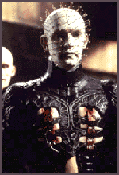 Where Hellraiser succeeds through fear of the unknown, the sequel takes a visibly different approach by distinctly illustrating a very dark and detailed vision of Hell. The Cenobites are full-fledged characters by this point, and we learn about their past and the reason they came to be as they are. It's important to note that Hellbound is substantially more grisly than its predecessor, which wasn't exactly light on the blood-and-guts in its own right. Hellraiser 2 is not a film for the squeamish or faint of heart, but it does have amazing imagery and a compelling thematic structure. Fans of the series seem to be split on whether the sequel outperforms the original, so suffice it to say that both films have deservedly found their place in the upper echelon of recent splatter fests. (Kim Hollis/BOP)
Where Hellraiser succeeds through fear of the unknown, the sequel takes a visibly different approach by distinctly illustrating a very dark and detailed vision of Hell. The Cenobites are full-fledged characters by this point, and we learn about their past and the reason they came to be as they are. It's important to note that Hellbound is substantially more grisly than its predecessor, which wasn't exactly light on the blood-and-guts in its own right. Hellraiser 2 is not a film for the squeamish or faint of heart, but it does have amazing imagery and a compelling thematic structure. Fans of the series seem to be split on whether the sequel outperforms the original, so suffice it to say that both films have deservedly found their place in the upper echelon of recent splatter fests. (Kim Hollis/BOP)
 If you haven't seen this one yet, don't fret; you'll get your chance to do so shortly. The Eye is the most contemporary film selected by BOP, but rest assured it deserves its spot on the list. This Hong Kong/Thailand co-production was written and directed by Danny and Oxide Pang. The Eye is a clever mix of psychological thrills and supernatural creepiness. Not only does the film make you jump several times, it also never really lets you relax. Every shot in the opening two-thirds of the movie is a suspense-filled piece of minimalist eye-candy. The flick also has the best opening in horror cinema history, and trust us, you absolutely must see The Eye in a dark theatre.
If you haven't seen this one yet, don't fret; you'll get your chance to do so shortly. The Eye is the most contemporary film selected by BOP, but rest assured it deserves its spot on the list. This Hong Kong/Thailand co-production was written and directed by Danny and Oxide Pang. The Eye is a clever mix of psychological thrills and supernatural creepiness. Not only does the film make you jump several times, it also never really lets you relax. Every shot in the opening two-thirds of the movie is a suspense-filled piece of minimalist eye-candy. The flick also has the best opening in horror cinema history, and trust us, you absolutely must see The Eye in a dark theatre.
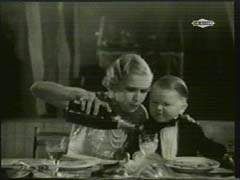 The titular freaks are members of the sideshow of a traveling circus. These characters are played by actors with actual physical deformities, so Freaks is sometimes criticized as simply exploitative, but director Tod Browning, who spent time traveling with a circus himself, presents an empathetic view of these people. However, he also takes advantage of the fact that most people's initial reaction to seeing someone with a physical deformity contains some amount of disgust and horror. In Freaks, when a midget falls in love with the "normal" trapeze artist, she conspires (with her true lover, the circus strongman) to return his feelings so as to marry him and then murder him to get his fortune. During the wedding celebration, the freaks accept her into their fold with the ominous chant, "Gooble, gobble. Gooble gobble. We accept her. We accept her. One of us. One of us." Once the freaks learn of her plan, they enact their revenge during a rainstorm in one of the creepiest, most disturbing scenes ever filmed. This time they really mean it when they chant, "We will make her one of us." (Dan Krovich/BOP)
The titular freaks are members of the sideshow of a traveling circus. These characters are played by actors with actual physical deformities, so Freaks is sometimes criticized as simply exploitative, but director Tod Browning, who spent time traveling with a circus himself, presents an empathetic view of these people. However, he also takes advantage of the fact that most people's initial reaction to seeing someone with a physical deformity contains some amount of disgust and horror. In Freaks, when a midget falls in love with the "normal" trapeze artist, she conspires (with her true lover, the circus strongman) to return his feelings so as to marry him and then murder him to get his fortune. During the wedding celebration, the freaks accept her into their fold with the ominous chant, "Gooble, gobble. Gooble gobble. We accept her. We accept her. One of us. One of us." Once the freaks learn of her plan, they enact their revenge during a rainstorm in one of the creepiest, most disturbing scenes ever filmed. This time they really mean it when they chant, "We will make her one of us." (Dan Krovich/BOP)
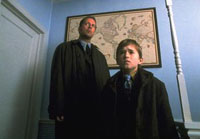 So ubiquitous that variations are now standard monologue fare, the movie that launched the careers of Haley Joel Osment and M. Night Shyamalan is more than just a gimmick, and more than just the quote. A tidy little spook movie that kept audiences guessing at its core secret till the very end, Sixth Sense contains many genuine chills and gotcha moments along the way to its not-entirely-happy ending. Another film that uses atmosphere, music and sound effects to heighten the terror factor, this one had commercials that frightened me enough that the first time I saw one, I turned on every light in the house. And to say that the film more than lived up to its hype is almost to not do it justice, as it certainly ranks as one of the best horror films of all time.
So ubiquitous that variations are now standard monologue fare, the movie that launched the careers of Haley Joel Osment and M. Night Shyamalan is more than just a gimmick, and more than just the quote. A tidy little spook movie that kept audiences guessing at its core secret till the very end, Sixth Sense contains many genuine chills and gotcha moments along the way to its not-entirely-happy ending. Another film that uses atmosphere, music and sound effects to heighten the terror factor, this one had commercials that frightened me enough that the first time I saw one, I turned on every light in the house. And to say that the film more than lived up to its hype is almost to not do it justice, as it certainly ranks as one of the best horror films of all time.
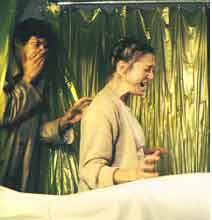 The human race is being replaced, one by one, with pod-people clones. Nothing can be done; nobody can help. Such is the mind-shockingly hopeless predicament faced in Philip Kaufman's Invasion of the Body Snatchers.
The human race is being replaced, one by one, with pod-people clones. Nothing can be done; nobody can help. Such is the mind-shockingly hopeless predicament faced in Philip Kaufman's Invasion of the Body Snatchers.